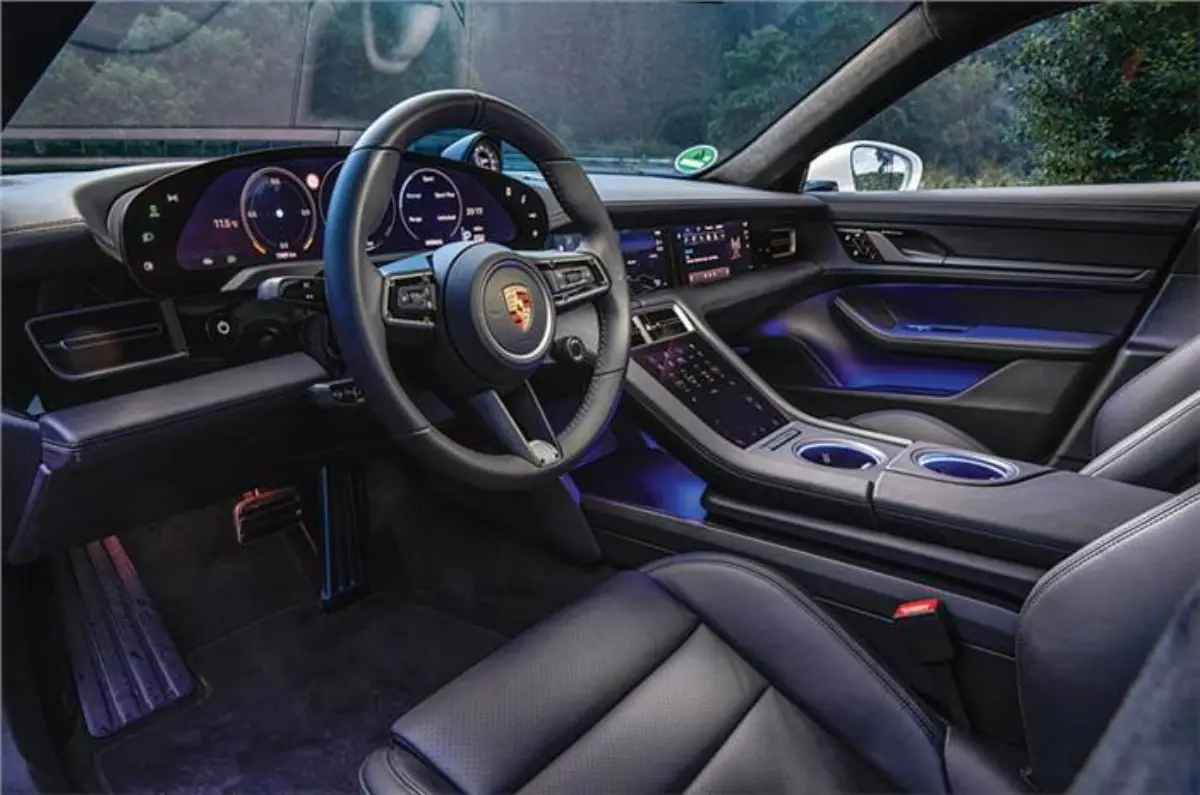Porsche Taycan: The extent people (and businesses) will go to in order to make a point is astounding. The duration? 6,500 km spanning nine nations. And what’s the prove point? that by connecting to the Ionity fast-charging stations that are appearing on European roads, the Porsche Taycan—the German sportscar manufacturer’s first entirely electric vehicle—can travel across the continent just like a conventional vehicle.
Creating long-distance travel throughout Europe is the primary goal of Ionity, a recently established joint venture between the Ford, Daimler, BMW, and Volkswagen groups. With 350kW of output, Ionity’s high-power charging stations can fully recharge the Taycan’s enormous 93.4kWh battery in minutes as opposed to hours. By 2020, Ionity wants to open 400 fast-charging stations throughout Europe, but as of right now, there are only 150, and the average distance between chargers is 120 km.
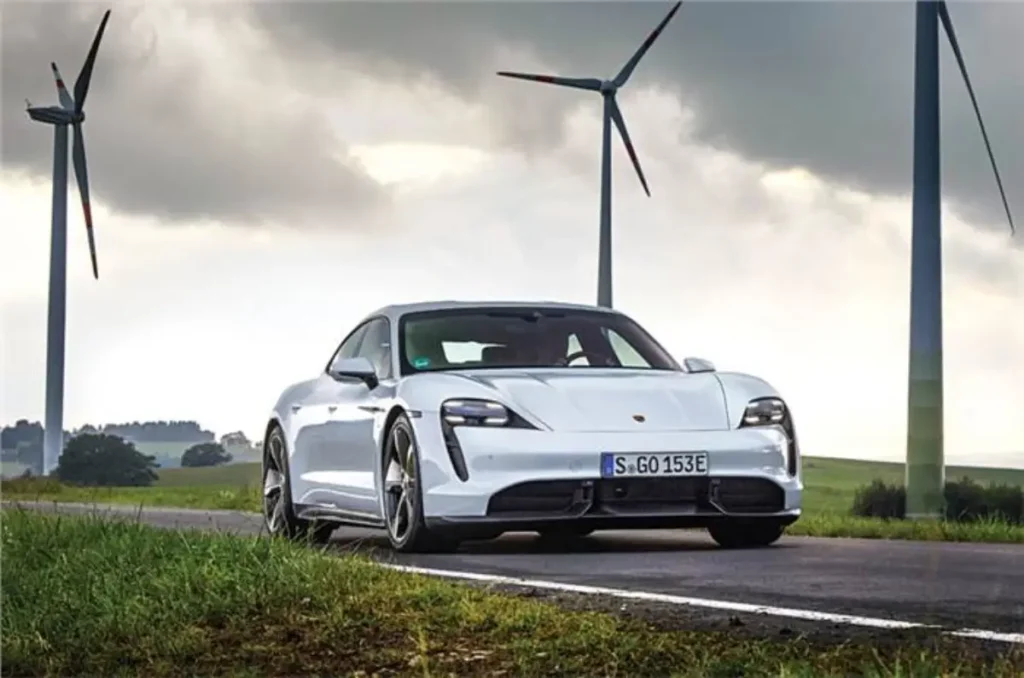
The fact that there are currently so few Ionity outlets is unavoidable for the time being, which emphasises how important the Taycan’s range is. In the world of electric vehicles, range is actually more valuable than performance, speed, and power. Thus, how quickly is not the most important question. How far can the Taycan travel, though? To address all of those questions and more, I jumped on Porsche Taycan electric train for the final 670 km of a massive drive that began in Oslo, travelling from Berlin to Stuttgart.
Tayc a look
Although the Taycan is Porsche’s first electric vehicle, its primary distinction is that it is a Porsche, meaning that performance has been the primary focus of its design and engineering. Does it, however, appear to be a Porsche? Every feature of the storied brand is present in this four-door, four-seat sedan. It has some Panamera-like features, but it also has a 911-like rear roofline and muscular haunches. Since there isn’t a large engine to house, the Taycan has a fairly low bonnet that drops sharply towards the front.
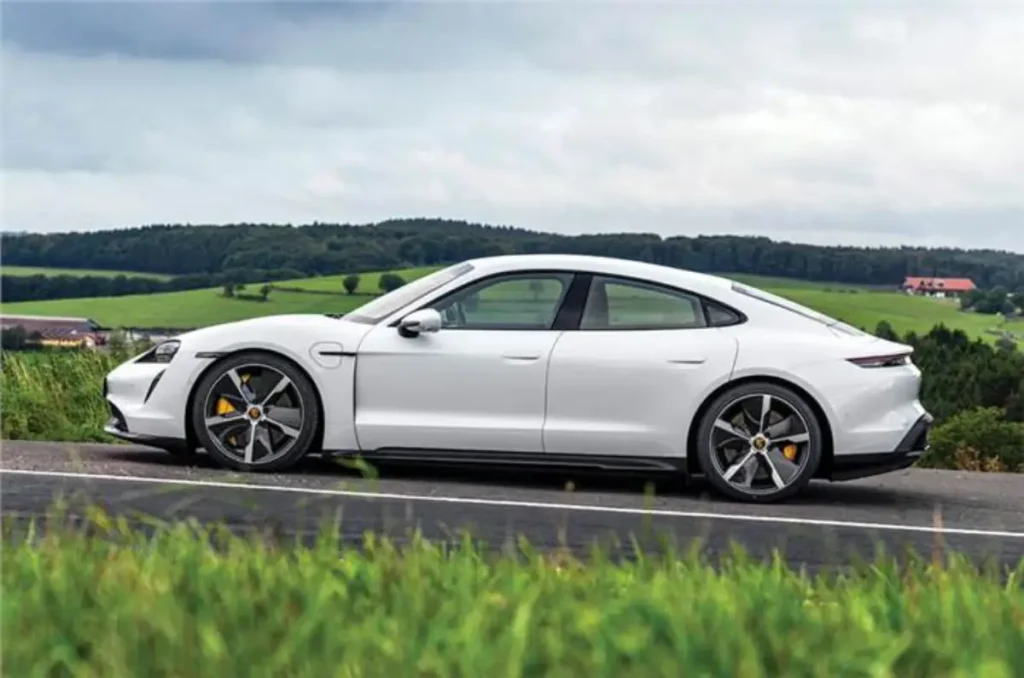
In fact, the Turbo S version I drove had massive 21-inch alloy wheels (the Turbo gets 20-inch ones), which made the overall stance extremely hunched and overtly sporty. With the exception of the four LED headlight clusters and the thin light strip that runs across the back, you would expect an electric vehicle to have some futuristic or technological design elements. However, the Porsche Taycan design is surprisingly clean, simple, and smooth. Despite having an understated overall design, the Porsche Taycan is clearly designed to be the fastest electric car available for commuting from point A to point B. This brings me to the second crucial question. Is the Taycan driving as a Porsche ought to?
Porsche unleashed
The Taycan accelerates from 0 to 100 km/h in just 2.8 seconds, which is how quickly part of the answer appears. Even though these numbers are impressive, they don’t tell the whole story because, among other things, the Tesla Model S P100D can go from 0 to 100 mph in 2.6 seconds, so they are not the EV performance benchmark. The Taycan feels significantly faster than the numbers indicate, though, and that will matter to owners.
Much quicker.
When you indulge in a launch control start, the force of the forward thrust will astound you, banging your head against the seat. The first gust of acceleration is so intense that it seems as though I’m strapped onto Chandrayaan-2 during takeoff. The beef burger I had for lunch presses down into my intestines and my brain can’t keep up with the scenery of Swabian flashing past. The 800V electrical architecture that powers the two electric motors in the Turbo S variant I’m driving, which have a combined power of 761 horsepower, is what powers this incredible performance. Only 680 horsepower is produced by the smaller Turbo variant. Even more amazing is how smoothly and silently this enormous amount of power is delivered. The Porsche Taycan electronically capped top speed of 265 kph can be reached in a whiff, but even at that speed, the cabin remains remarkably quiet. With the exception of a slight wind noise and a quiet droning sound from the tyres, the Porsche Taycan glides over German motorways with such ease that it seems insignificant. Undoubtedly, the Porsche Taycan exceptionally low 0.22 drag coefficient—the lowest on a Porsche—allows it to effortlessly slice through the air.
The absence of drama could deprive the Porsche Taycan of its personality, but luckily, it retains its Porsche essence, so unlike most EVs, the driving experience isn’t dulled.
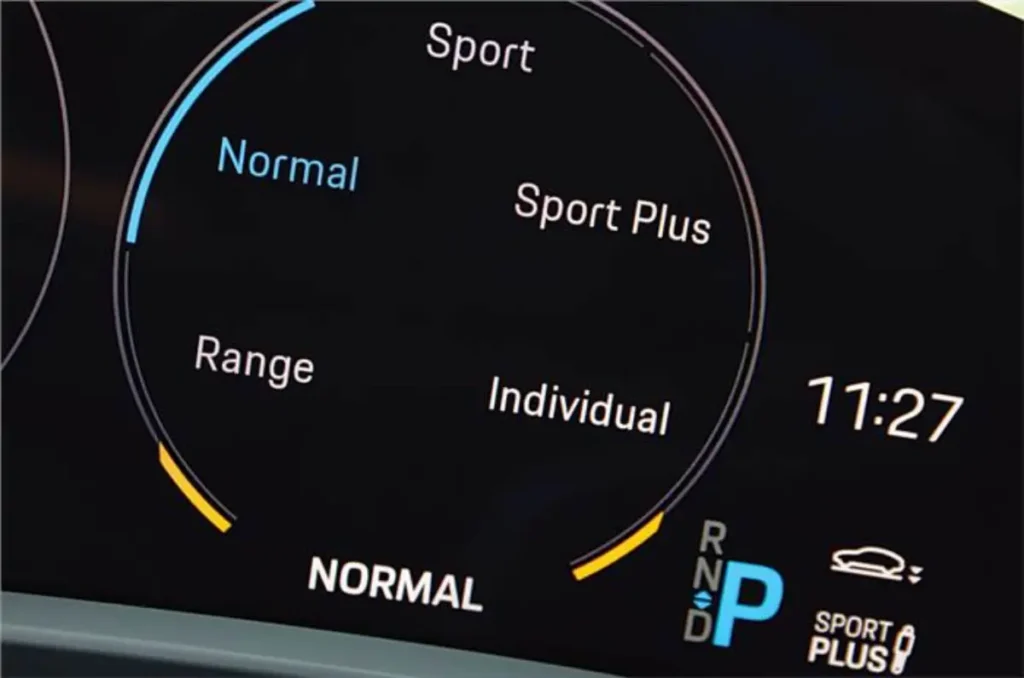
When the drive mode dial is turned to “Sport Plus,” the twin permanent magnet synchronous motors’ electric thrum is exquisitely amplified. When you lift off to coast, the electric motors’ whine sounds like a non-synchro gearbox with straight-cut teeth. Indeed, this is the first electric vehicle with a really pleasing sound! It is distinct, yet beneficial.
Additionally, you can feel the unusual two-speed transmission—the first on an EV—shifting, particularly during a launch. This little power outage oddly feels more organic than other EVs. Second gear offers a higher top speed, while first gear permits faster acceleration and is only engaged in Sport and Sport Plus modes.
The Porsche Taycan surprisingly good road manners, which belie its 2.3 tonne weight, are the clearest example of Porsche Taycan DNA. It has a strong grip, can change direction quickly, and has the impression of being superglued to the road. Even though it’s not quite as tactile as other Porsches, the steering’s amazing precision and fluency make every turn enjoyable. You won’t realise the Taycan is heavier than you initially believe until you go through extremely tight turns or a sequence of undulations.
The excellent news is that ride comfort hasn’t suffered in favour of the exceptional grip and deft handling. The Porsche Taycan rides beautifully over the few uneven roads we came across in rural Germany because of its excellent body control, well-judged adaptive dampers, and air springs. In fact, I think the Taycan’s ability to handle Indian roads will surprise owners when it eventually arrives.
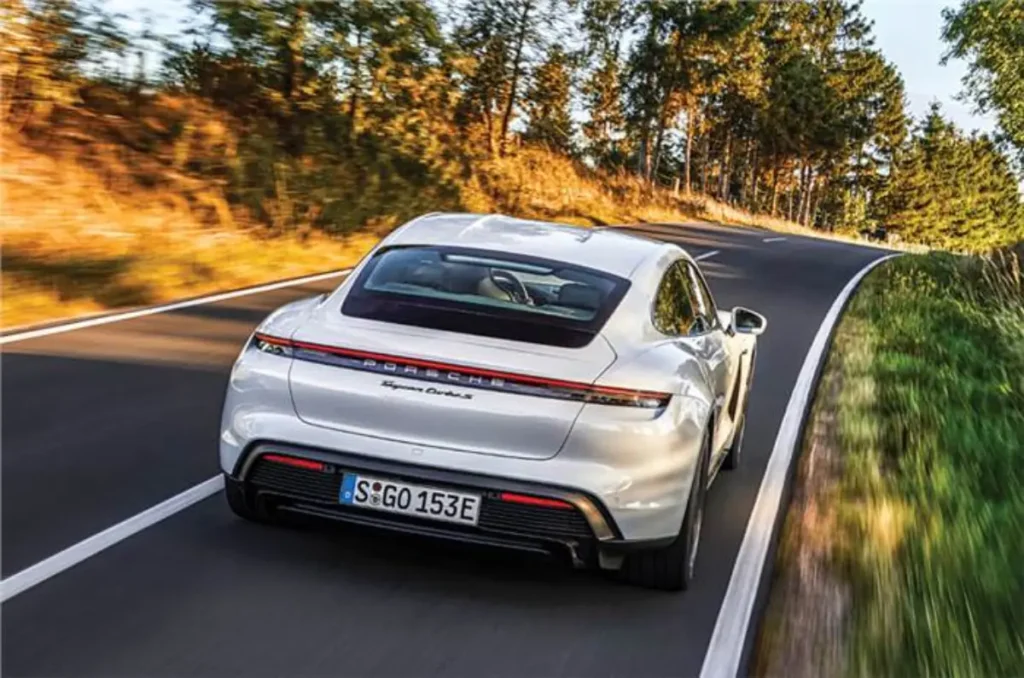
The brakes are one area where Porsche excels, along with the EV rulebook. The company has carefully and deliberately worked to make the brakes feel as natural as possible. Rather than employing regenerative braking, which causes the car to accelerate rapidly when you take off, the Taycan coasts along like a typical vehicle, only utilising the majority of the regeneration when you press the brake pedal. Porsche is attempting to make the Taycan feel as unlike an EV as possible, and as a result, the brakes are nicely progressive, just like they should be in any high-performance sportscar.
Additionally, the ideal driving position is distinctly Porsche and instantly unites you with the vehicle. Although a little stiff at first, the well-contoured seats turn out to be incredibly comfortable during the trans-European drive.
On display
At first, four digital screens might seem overwhelming, but in typical Porsche fashion, they are so logically laid out and easy to use that navigating through their many features quickly becomes second nature.
Porsche’s instrument panel still has the traditional five-cluster design theme, but you can alter the arrangement in a number of ways thanks to the all-digital display. If you’d like, you can even have a single function visible, such as a sizable navigation map that fills the entire curved screen.
For years, Porsche Taycan has steadfastly adhered to its custom of placing a sizable analogue tachometer in the centre of the instrument cluster; however, since the engine has been removed, the tachometer has also been removed. If you choose the Classic mode layout, it has been replaced by a power metre featuring a digital speedometer in the middle.
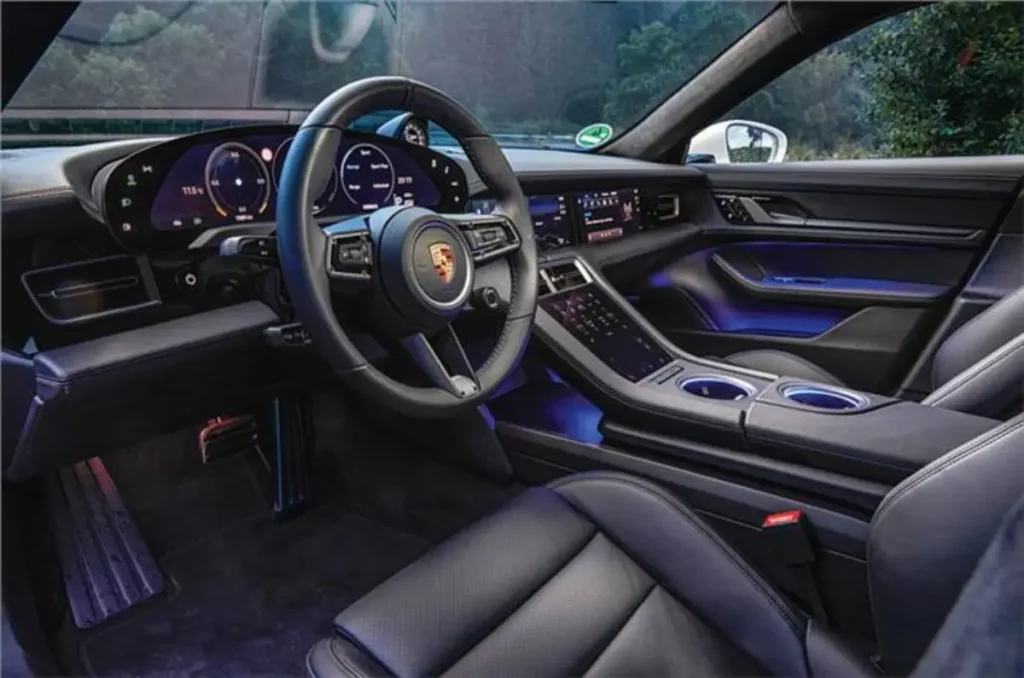
A secondary 8.4-inch screen in the centre console controls features like the audio volume and climate control, while the primary 10.9-inch display for the infotainment system and other important functions is located on the dash.
The speedo readout on the optional fourth screen, which is positioned directly in front of the passenger, will undoubtedly heighten the thrill of the journey. In addition, real-time information such as traffic and weather updates, radio, and navigational directions are available to passengers. It is beneficial to let the passenger fiddle with these features while the driver focuses on the road. I missed having physical buttons, and the screens, particularly the one in the centre console, were easily fingerprinted and occasionally needed to be wiped.
Spending time in the back seat of the Porsche Taycan, battling to get past the small door opening and low roofline, is not what you want to be doing. However, once you’re inside, the posting isn’t that difficult. No, it’s not roomy by large hatchback or sedan standards, but it’s also not claustrophobic. With some minor seat adjustment, those who are six feet tall will have plenty of legroom and decent headroom as well.
The Porsche Taycan cabin is elevated to make room for the battery that is concealed beneath it. In order to avoid forcing passengers to sit in an uncomfortable “knees-up” position, Porsche cleverly designed “foot garages,” which are recesses that increase legroom and promote better seating posture.
Although the boot isn’t very large, it can fit a few small bags, and the front trunk, or “frunk” as EVs call it, has 81 litres of capacity. Although there isn’t much storage space in the cabin, there are enough cubby holes for small items.
Even though the cabin is very useful, an EV’s range is really what determines how useful it is.
How far can you tayc it?
Drive the Porsche Taycan as it begs you to, and you’ll notice that the battery drains remarkably quickly. It also serves as a reminder that you should always pay attention to the battery icon and that EVs are still somewhat restricted compared to their internal engine counterparts. An 80 percent charge on our last run suggested a 283 km range, which seemed like a good enough buffer for the 224 km to Stuttgart. However, I juiced the battery by driving hard and mostly in Sport Plus mode. As a result, my driving partner Damien Reed, who took over for me after my stint, had to drive in “Granny mode” to save battery life. There was only 4 percent of battery life left when we arrived home. Our hearts were racing during that final stretch of the drive more than during all the times we effortlessly raced to Vmax on the autobahns.
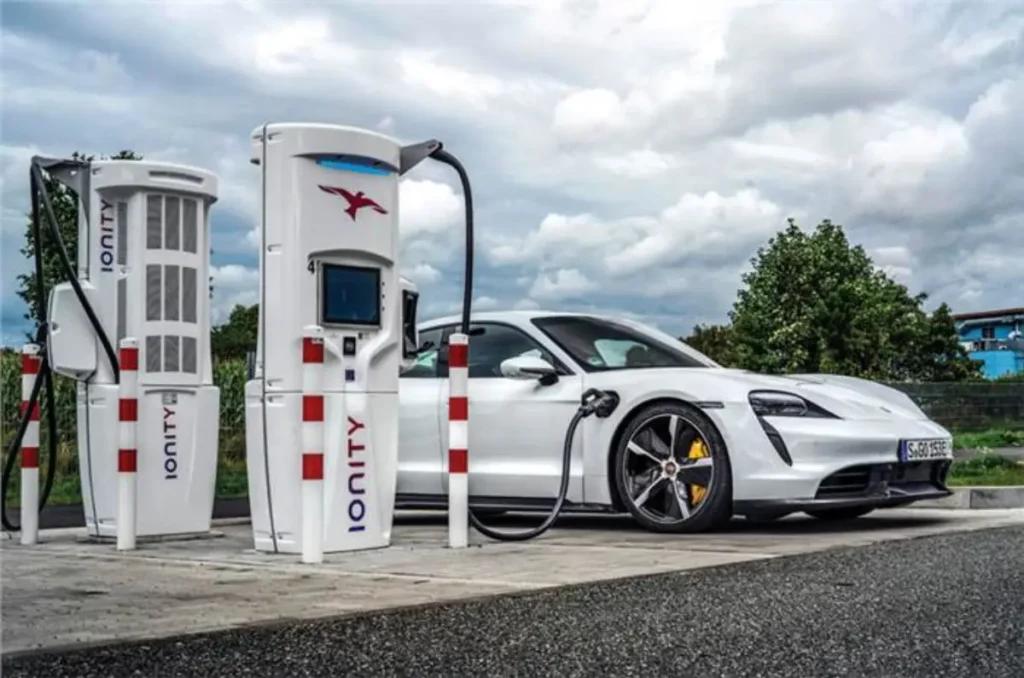
The Ionity stations’ exceptional functionality was the most surprising discovery I made. The battery was filled from 5 percent to 80 percent in just 20 minutes using the Porsche Taycan 270kWh charging rate. Even so, it still takes longer than filling up a tank with liquid fuel, but the extra time was well spent enjoying a quick bite to eat and a cup of coffee. The Ionity network also brought to light India’s significant EV disadvantage, which is mostly attributable to our nonexistent public charging infrastructure. The good news is that Porsche still intends to launch the Porsche Taycan in India; it will make its debut in Delhi the day before the Auto Expo begins. Although the prices for India haven’t been set in stone yet, we figure on Rs 2.5–2.7 crore.
I have to say that the Porsche Taycan is the best EV I have ever driven. Still, is it the best Porsche? Despite the dropping state of charge, I would still rather take a 911 and enjoy watching the rev counter rise!
Porsche Taycan Review on You-Tube
Also Read: Revving Up: A Comprehensive Review of the Volvo XC40 Recharge
Share to Others
